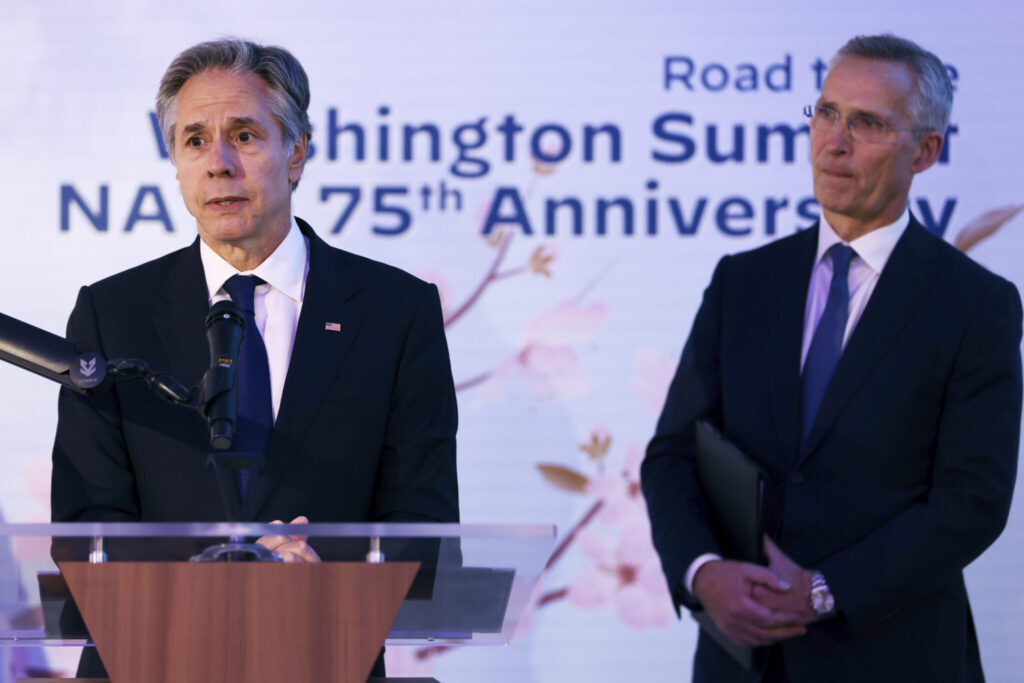NATO marked on Thursday 75 years of collective defense across Europe and North America, with its top diplomats vowing to stay the course in Ukraine as better armed Russian troops assert control on the battlefield. The anniversary comes as the now-32-nation alliance weighs a plan to provide more predictable longer-term military support to Ukraine. Plagued by ammunition shortages, Ukraine this week lowered the military conscription age from 27 to 25 in an effort to replenish its depleted ranks.
Quick Read
- NATO 75th Anniversary: NATO marked its 75th anniversary with a commitment to support Ukraine against better-armed Russian forces.
- Increased Support for Ukraine: The alliance is considering more predictable long-term military aid for Ukraine amidst its ammunition shortages and lowering of conscription age to boost military ranks.
- Estonian Foreign Minister’s Appeal: Margus Tsahkna emphasized the need for more military support for Ukraine, including air defense systems and artillery shells.
- Commemorative Ceremony: A ceremony was held at NATO’s Brussels headquarters to honor the signing of the founding treaty on April 4, 1949.
- Stoltenberg’s Tribute: NATO Secretary General Jens Stoltenberg highlighted the significance of the concise yet impactful Washington Treaty.
- Blinken’s Tribute: U.S. Secretary of State Antony Blinken paid homage to military personnel and stressed the importance of defending alliance principles against aggression.
- Sweden’s New Membership: Following Russia’s invasion of Ukraine, Sweden joined NATO as its 32nd ally, with Finland also joining to seek security under NATO’s collective defense.
- Putin’s Concerns over NATO Expansion: The Russian President cited NATO’s proximity to Russian borders as a partial reason for the war in Ukraine.
- Article 5 and Collective Defense: The alliance celebrates the principle of collective defense, which has been invoked only once after the 9/11 attacks.
- NATO’s Historical Operations: The alliance reflects on its varied past operations, including successes and challenges, notably the controversial retreat from Afghanistan.
- Ukraine’s NATO Aspirations: While Ukraine seeks NATO membership, the alliance remains divided on the issue, offering only future openness without current support.
- Divergent Views on Arming Ukraine: NATO provides non-lethal aid as an organization, but member states individually or in groups offer military support.
- Reinforcing NATO Borders: Post-Russia’s invasion build-up, NATO focused on strengthening its own borders to deter potential aggression towards member states.
- Article 5 and U.S. Commitment: The principle faced scrutiny during Donald Trump’s presidency, with concerns over the U.S. defense commitment linked to member states’ defense spending.
The Associated Press has the story:
NATO marks its 75th birthday as Russia’s war in Ukraine gnaws at its unity
Newslooks- BRUSSELS (AP) —
NATO marked on Thursday 75 years of collective defense across Europe and North America, with its top diplomats vowing to stay the course in Ukraine as better armed Russian troops assert control on the battlefield. The anniversary comes as the now-32-nation alliance weighs a plan to provide more predictable longer-term military support to Ukraine. Plagued by ammunition shortages, Ukraine this week lowered the military conscription age from 27 to 25 in an effort to replenish its depleted ranks.
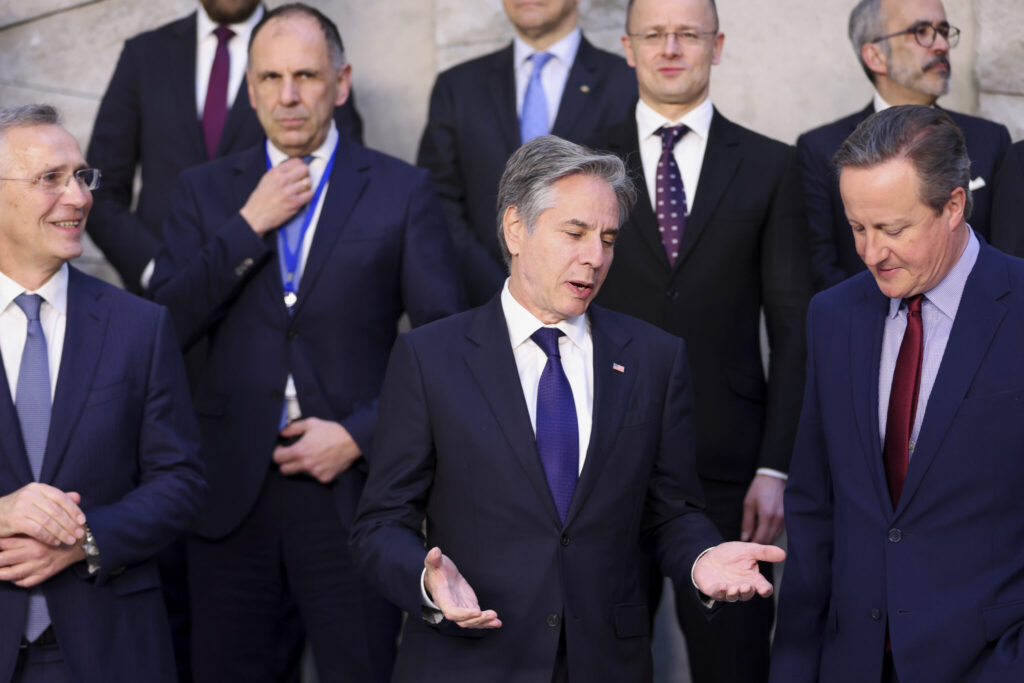
“Ukraine is under heavy attacks, like daily, 24-seven,” Estonian Foreign Minister Margus Tsahkna told reporters, appealing for more military materiel for Ukraine like air defense systems, drones and artillery shells.
“We need to give these systems which we are not using to Ukraine, to take and protect their people, civil infrastructure and also energy infrastructure,” he said, before a ceremony with his counterparts to mark the day NATO’s founding treaty was signed: April 4, 1949, in Washington.
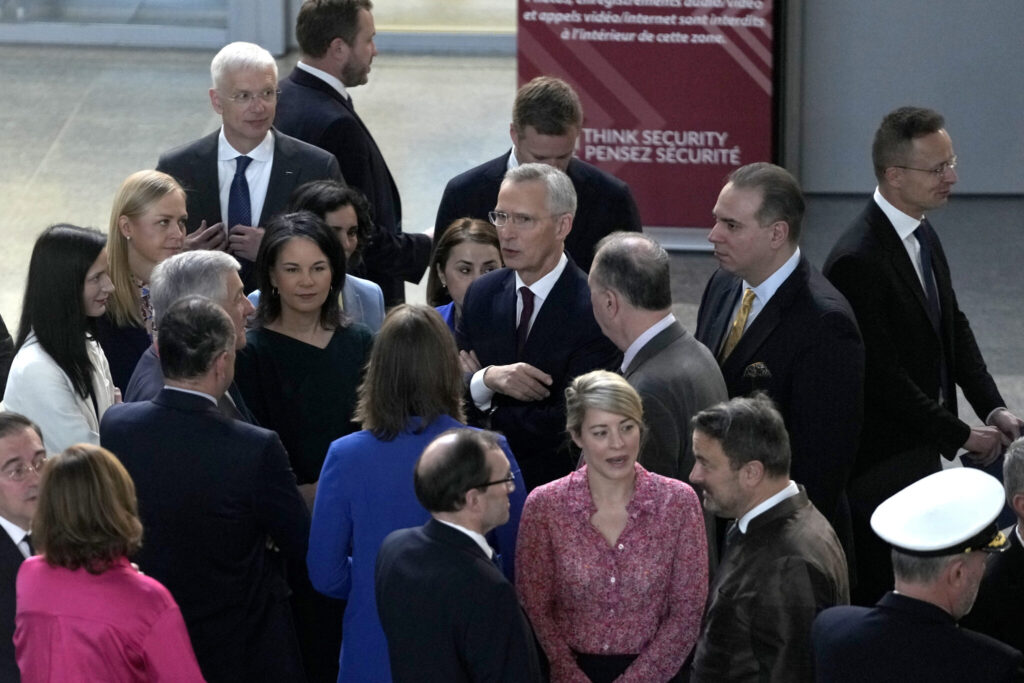
A bigger celebration is planned when NATO leaders meet in Washington from July 9 to 11.
Hundreds of staffers filled the vast air terminal-like space at the center of NATO’s sprawling Brussels headquarters, while scores of others looked down from glassed walkways and stairways as Belgian and Dutch military bands played the NATO Hymn, the original Washington Treaty laid before them.
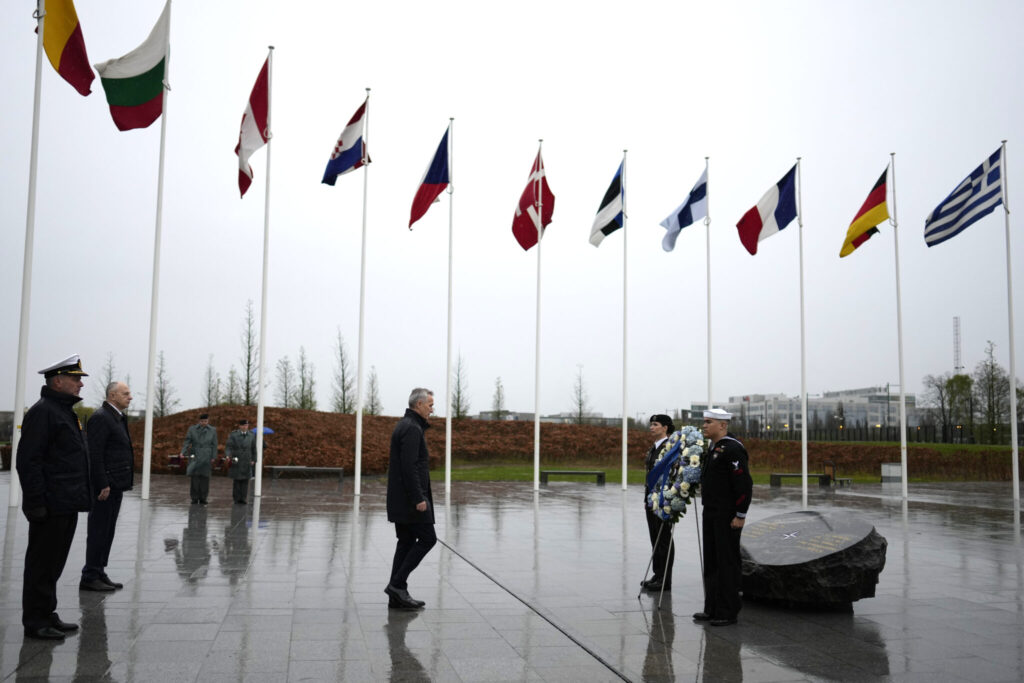
“I like the Washington Treaty. Not least because it is very short,” NATO Secretary General Jens Stoltenberg said with a smile. “Just 14 paragraphs over a few pages. Never has a single document with so few words meant so much to so many people. So much security. So much prosperity, and so much peace.”
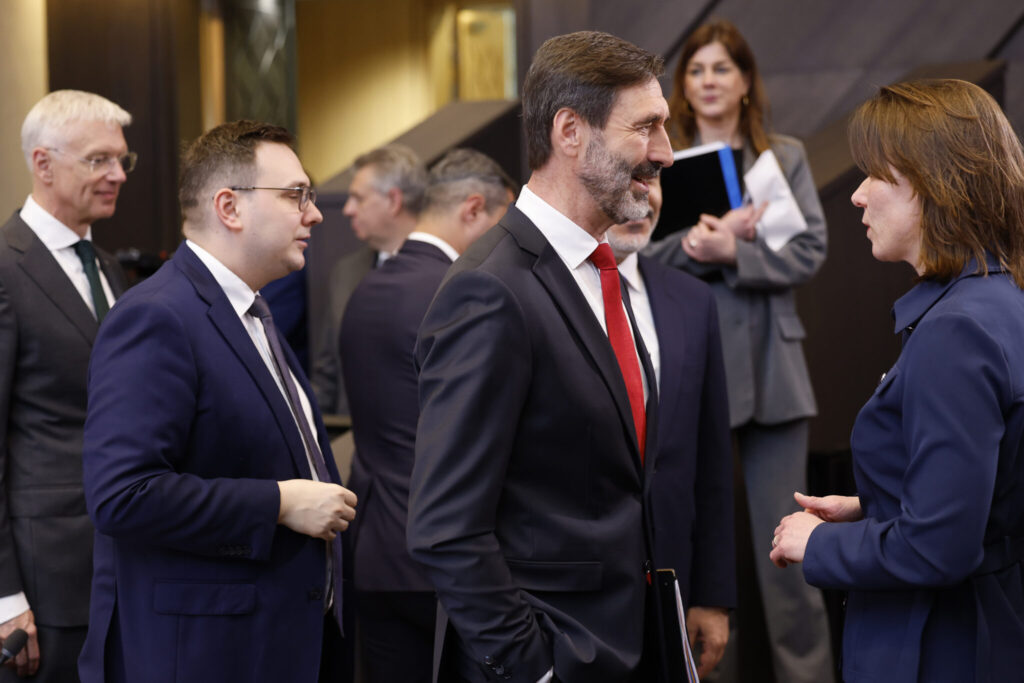
Outside Brussels on Wednesday evening, U.S. Secretary of State Antony Blinken had paid tribute “to the millions of soldiers, sailors, and aviators whose courage and willingness to put their lives on the line have given weight to our sacred commitment to defend one another.”
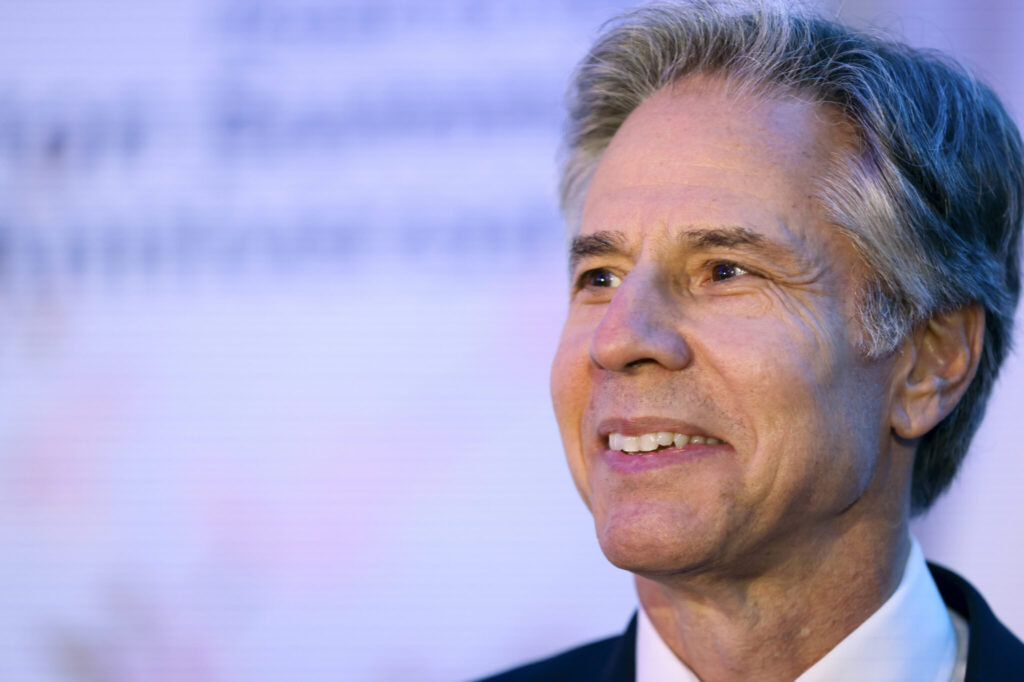
Blinken said that even as foreign ministers mark more than seven decades of peace, “that security – together with the Alliance’s core principles of democracy, liberty, and the rule of law – is once again being threatened by those who believe that might makes right… and who seek to redraw borders by force.”
Sweden’s foreign minister, Tobias Billström, is taking part in the first ministerial-level meeting since his country became NATO’s 32nd ally last month. Russia’s full-scale invasion of Ukraine in February 2022 drove Sweden and Finland into NATO’s arms.
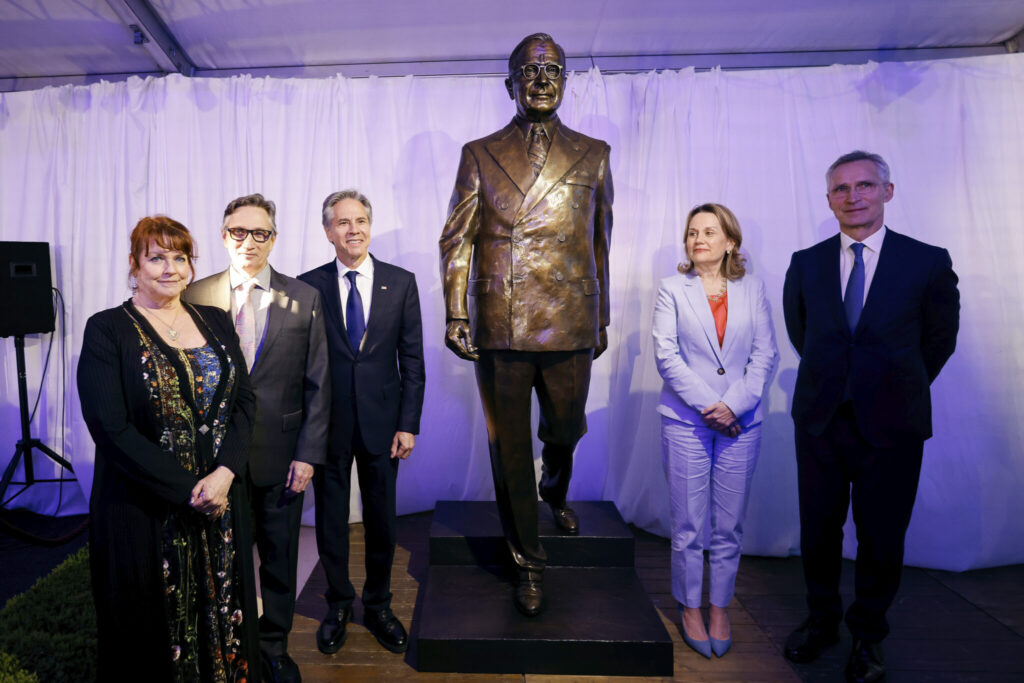
“NATO represents the freedom to choose,” Finnish Foreign Minister Elina Valtonen said, reflecting on the way the Nordic neighbors recently joined. “Democratic nations, free people chose to join. Unlike how Russia expands its by aggression or by illegal annexation.”
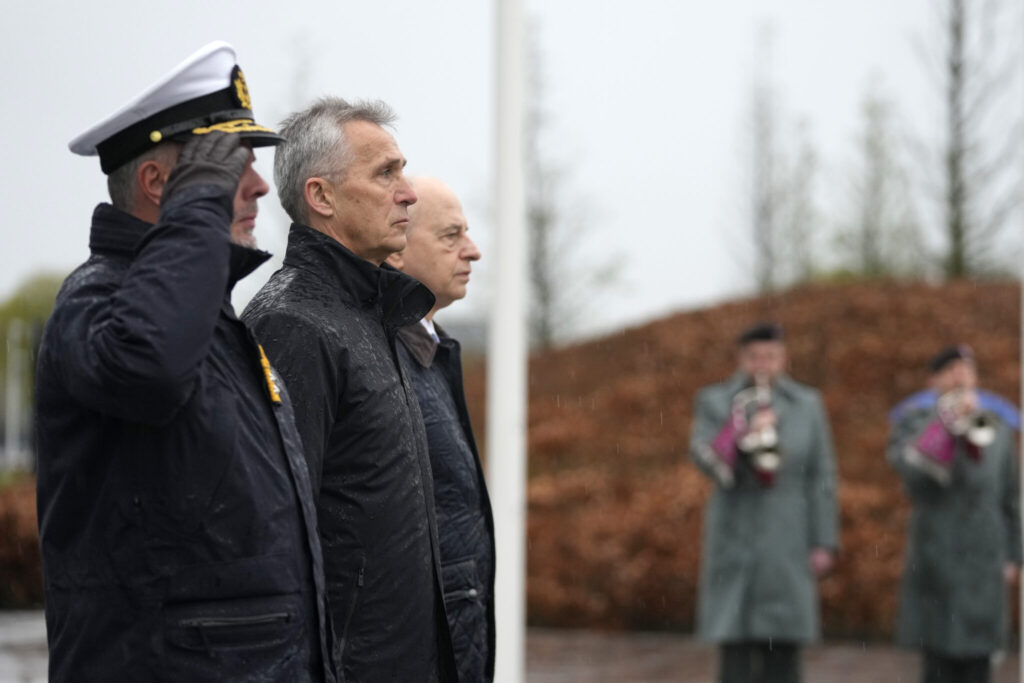
Putin said he launched the war, in part at least, because NATO was expanding closer to Russia’s borders.
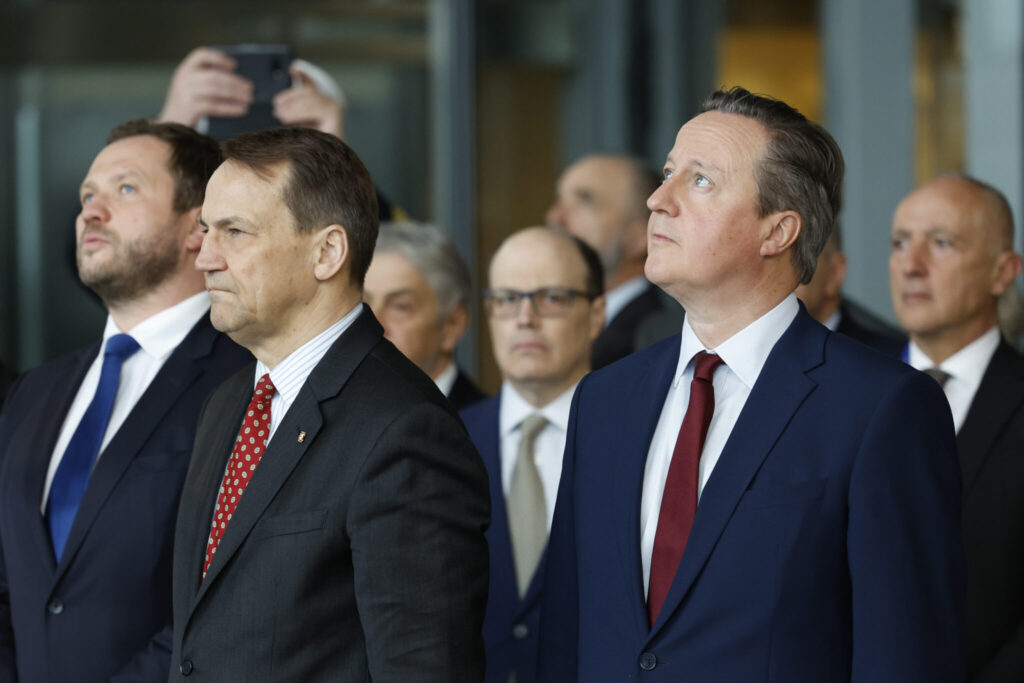
The alliance’s ranks have almost tripled from its 12 founding members, but Finland and Sweden joined in record time to shelter under NATO’s collective security guarantee.
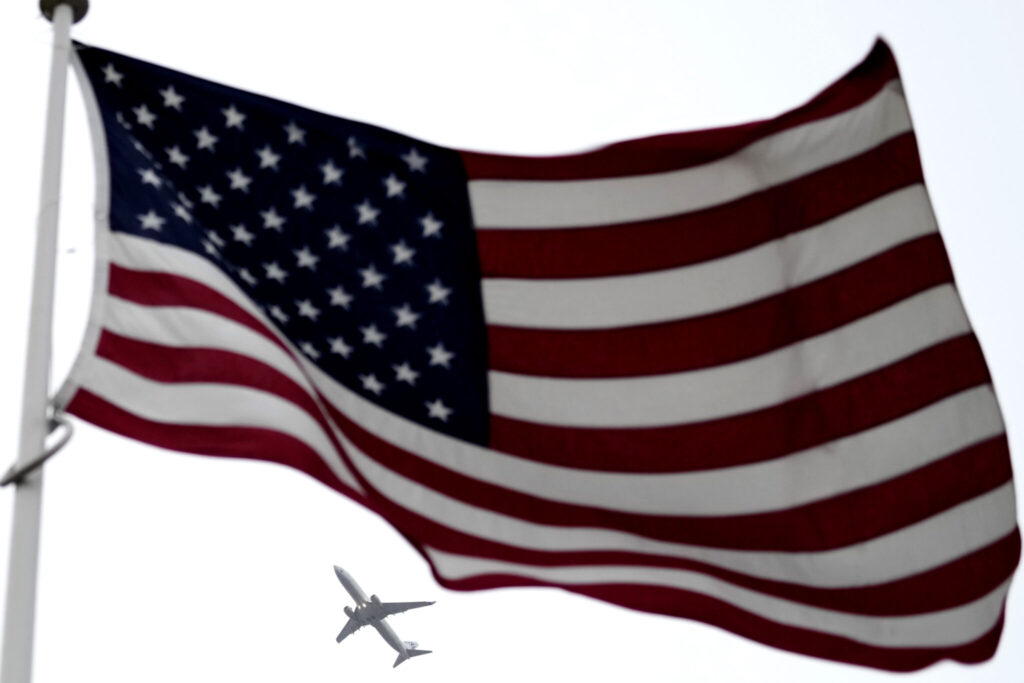
That promise — Article 5 of the Washington Treaty, which has been shipped to Brussels for the ceremony — stipulates that an attack on any one of their number must be met with a united response. It’s only ever been used once, after the Al-Qaeda attacks on U.S. soil in 2001.
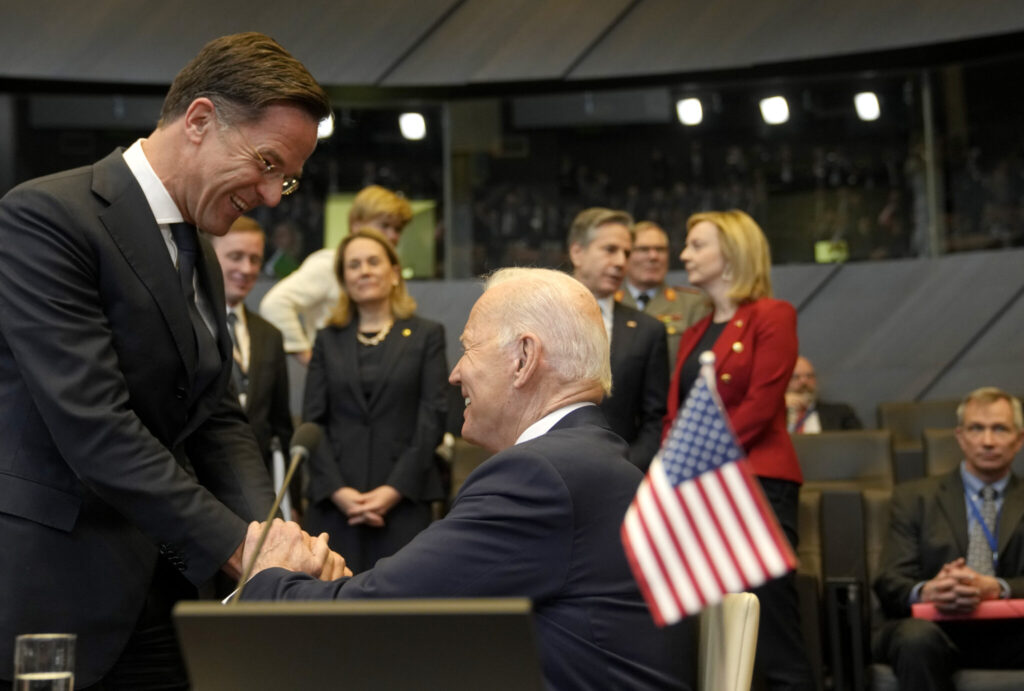
Among the more recent successes as it grew from the Cold War and after the Berlin Wall collapsed, NATO would count its 1999 air campaign against former Yugoslavia to end a bloody crackdown on separatist ethnic Albanians and its effort to avert near civil war in Macedonia in 2001.
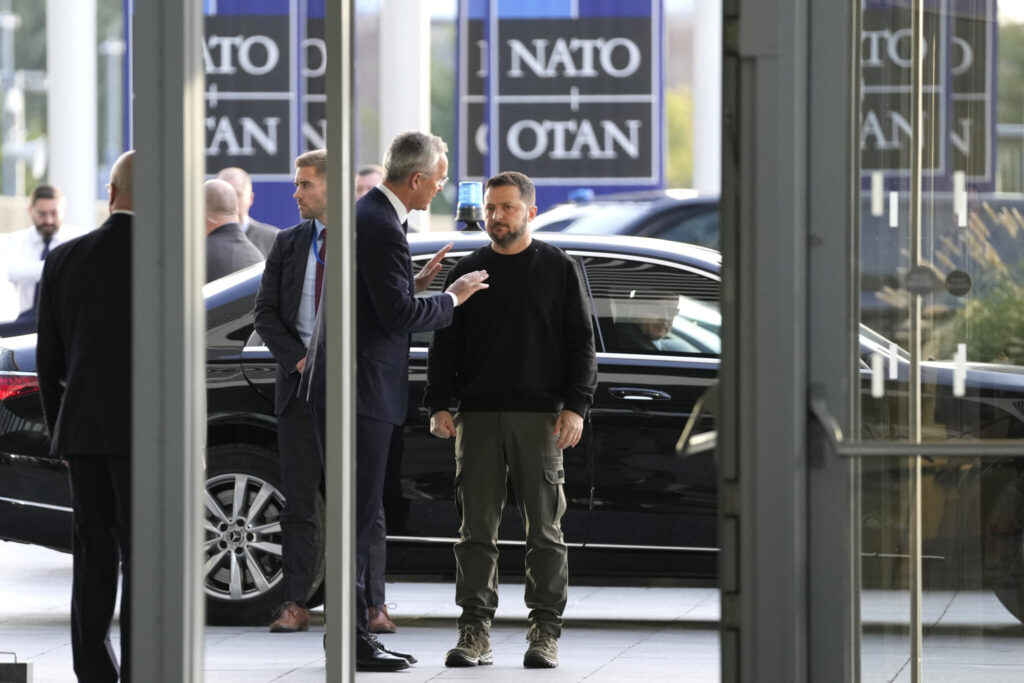
At the other end of the scale lies the operation in Afghanistan. NATO took command of the security effort in 2003 and it became the longest, costliest and deadliest in alliance history. It was marked by a chaotic retreat in August 2021, many of the successes over almost two decades abandoned.
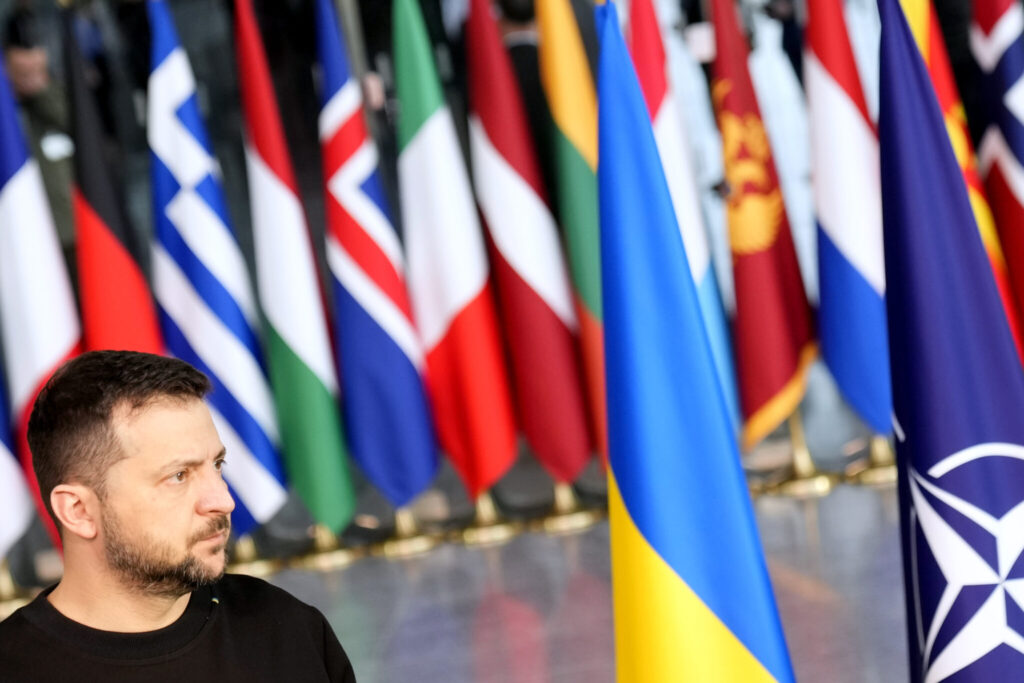
Today, Ukraine also wants a seat at NATO’s table, but the alliance works on unanimity and there is no consensus on whether it should join. Most allies oppose membership while war rages on anyway. For now, NATO promises only that its door is open for Ukraine in the future.
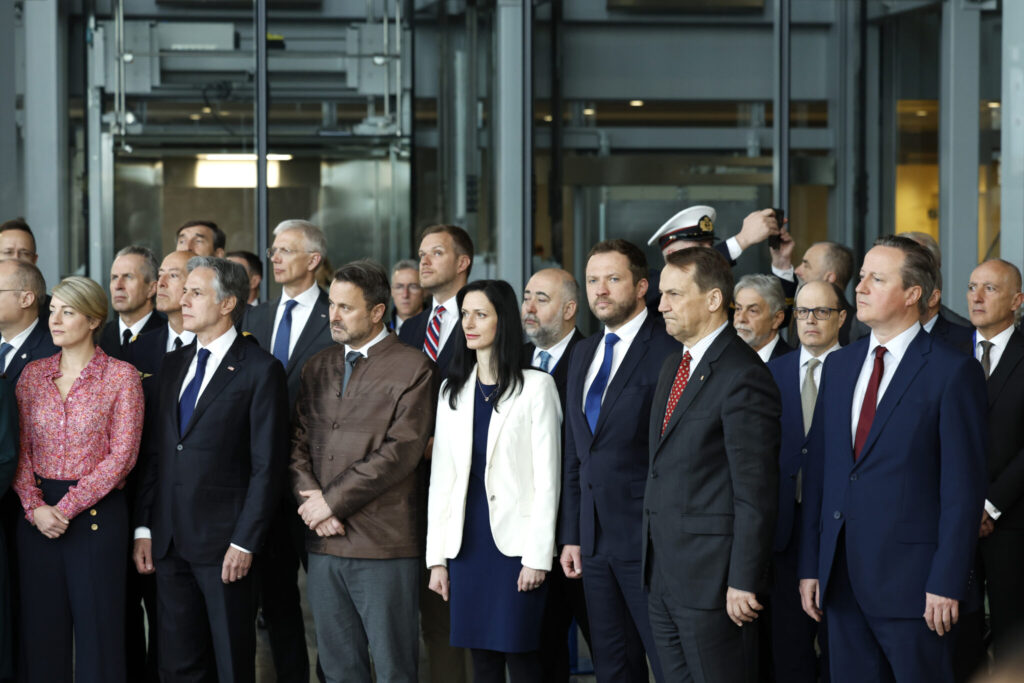
NATO allies cannot agree on whether to arm Ukraine either. As an organization, the alliance only provides non-lethal support like transport vehicles, fuel, combat rations, medical supplies and demining equipment. However, many members provide arms and ammunition bilaterally or in groups.
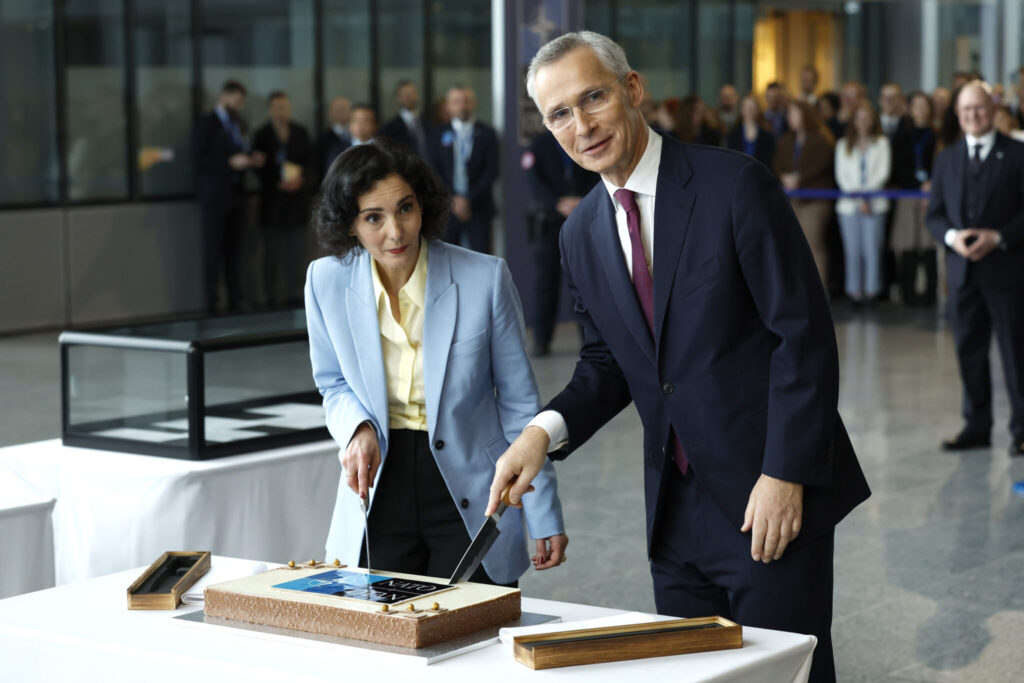
The bulk of NATO’s efforts since Russian troops began massing for the invasion has focused on reinforcing its own borders near Russia and Ukraine to dissuade President Vladimir Putin from targeting any of the allies next.
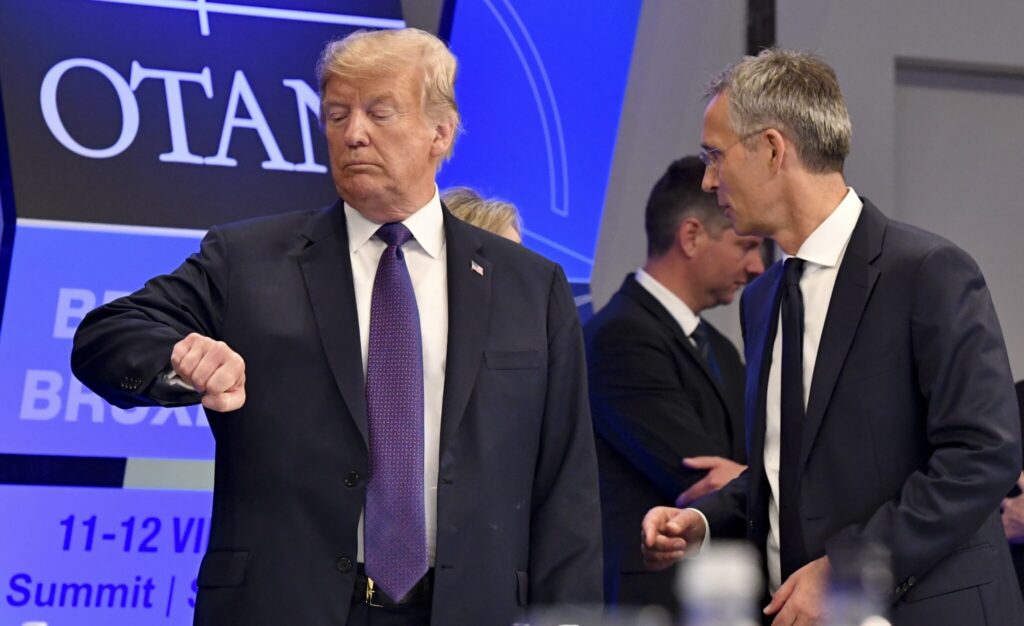
Article 5 was given perhaps its toughest test during Donald Trump’s term as president of the United States – by far NATO’s most powerful member country. Trump suggested the U.S. might not come to the defense of any NATO ally who declined to boost their own defense spending to at least 2% of gross domestic product, as they had agreed to do in 2014.
Trump has repeated the threat during election campaigning this year. NATO predicts that 18 of its 32 members will reach that target this year, up from only 3 a decade ago.

